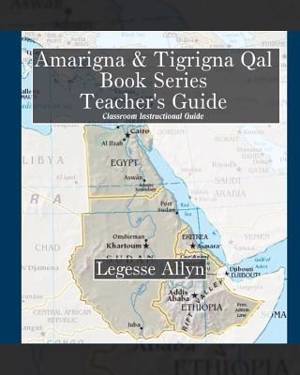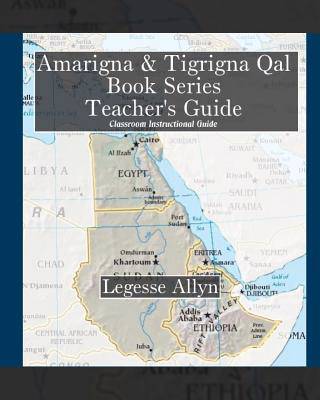
- Retrait gratuit dans votre magasin Club
- 7.000.000 titres dans notre catalogue
- Payer en toute sécurité
- Toujours un magasin près de chez vous
- Retrait gratuit dans votre magasin Club
- 7.000.000 titres dans notre catalogue
- Payer en toute sécurité
- Toujours un magasin près de chez vous
60,95 €
+ 121 points
Description
This teacher's guide includes information to help synthesize "Amarigna & Tigrigna Qal Hieroglyphs for Beginners" with Bloom's Taxonomy in the classroom, a pronunciation key for many common hieroglyphs, and classroom games and activities. Background: There are several current trends in social studies education. Among them are multicultural education, and the value of using phenomena similar to the learners' life and/or society to enhance and stimulate learning and motivation. These two trends are often mutually supportive and complimentary, as they are in the present case of the AIOS Amarigna & Tigrigna Qal Hieroglyphs for Beginners curriculum. In 1994, the AIOS National School Program curriculum was endorsed by the Black Education Commission of the Los Angeles Unified School District (LAUSD), the second largest school district in the United States. In reference to multicultural education the AIOS Amarigna & Tigrigna Qal Hieroglyphs for Beginners curriculum serves to expand the learners view of the ancient society and people of Ancient Gebts. Gebts is the ancient name of Egypt and the name Ethiopians and Eritreans continue to refer to Egypt by. Much has been written regarding the effect of mass communication and electronic media in narrowing the world community into a global village. In this context, the AIOS Amarigna & Tigrigna Qal Hieroglyphs for Beginners curriculum gives depth and meaning to the media images and provides positive examples of the functioning of ancient African societies. The latter factor doubly is important because the AIOS Amarigna & Tigrigna Qal Hieroglyphs for Beginners curriculum counteracts the often-negative stereotypes of Africa and its people, and serves as an instrument in enhancing the important cognitive functions, as defined in Benjamin Bloom's Taxonomy Of Educational Objectives: Cognitive Domain. The Curriculum provides students the opportunity to compare and contrast the ancient society of Egypt, observe the similarities and differences, and facilitates the development of systematic thinking in the student (see appendix I, for summary of Bloom's Taxonomy). A second factor of importance is the potential of the curriculum as a motivational instrument, which will enhance positive and productive learning behavior by the Africa-descended student, including African-American students. Also, it is important for students from other ethnic groups to become aware of ancient African cultures and people, such as this curriculum provides. American educators have generally accepted the importance and need for multicultural education as a means of addressing the problems of alienation and hostility, which exist between ethnic groups in America. There are numerous possibilities of synthesizing the AIOS Amarigna & Tigrigna Qal Hieroglyphs for Beginners curriculum with Bloom's Taxonomy. However because of time limitations, this brief introduction presents a mini-module of instructional plans as an example of how a synthesis of Bloom's Taxonomy and the AIOS Amarigna & Tigrigna Qal Hieroglyphs for Beginners curriculum might be developed. This teacher's guide includes information to help synthesize "Amarigna & Tigrigna Qal Hieroglyphs for Beginners" with Bloom's Taxonomy in the classroom, a pronunciation key for many common hieroglyphs, and classroom games and activities.
Spécifications
Parties prenantes
- Auteur(s) :
- Editeur:
Contenu
- Nombre de pages :
- 54
- Langue:
- Anglais
Caractéristiques
- EAN:
- 9781449545499
- Date de parution :
- 03-01-14
- Format:
- Livre broché
- Format numérique:
- Trade paperback (VS)
- Dimensions :
- 203 mm x 254 mm
- Poids :
- 127 g







